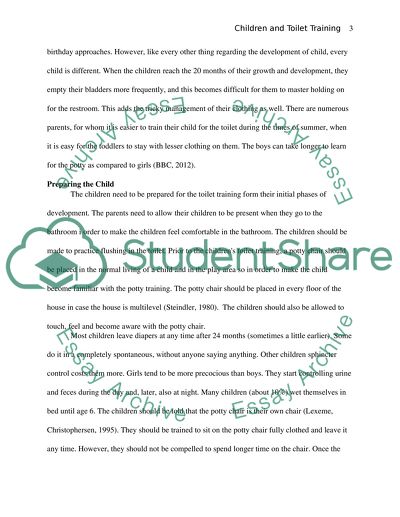Cite this document
(“Children and Toilet Training Research Paper Example | Topics and Well Written Essays - 1000 words”, n.d.)
Children and Toilet Training Research Paper Example | Topics and Well Written Essays - 1000 words. Retrieved from https://studentshare.org/psychology/1462393-children-and-toilet-training
Children and Toilet Training Research Paper Example | Topics and Well Written Essays - 1000 words. Retrieved from https://studentshare.org/psychology/1462393-children-and-toilet-training
(Children and Toilet Training Research Paper Example | Topics and Well Written Essays - 1000 Words)
Children and Toilet Training Research Paper Example | Topics and Well Written Essays - 1000 Words. https://studentshare.org/psychology/1462393-children-and-toilet-training.
Children and Toilet Training Research Paper Example | Topics and Well Written Essays - 1000 Words. https://studentshare.org/psychology/1462393-children-and-toilet-training.
“Children and Toilet Training Research Paper Example | Topics and Well Written Essays - 1000 Words”, n.d. https://studentshare.org/psychology/1462393-children-and-toilet-training.


